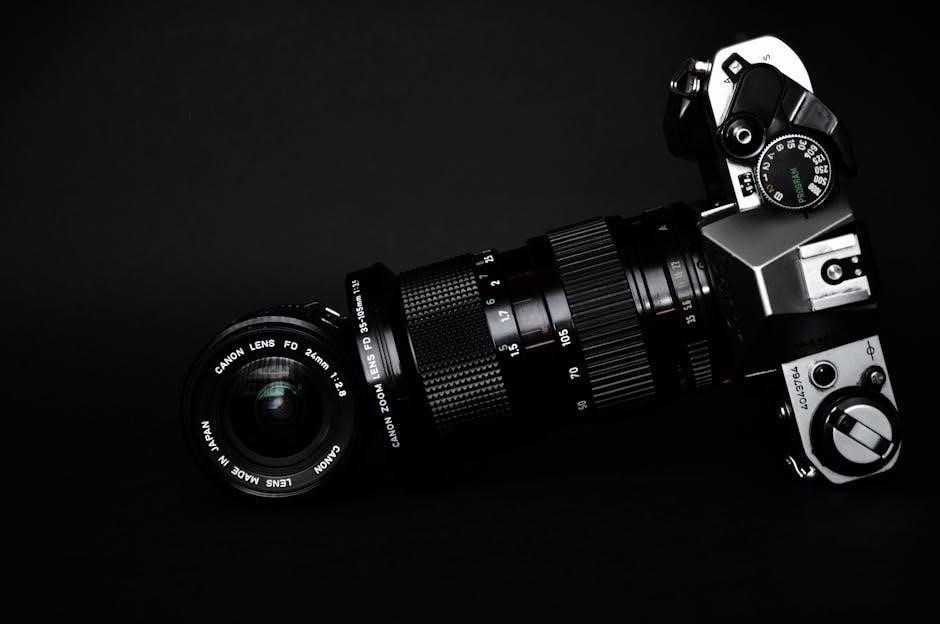The Kill A Watt Meter is a user-friendly device designed to measure electricity consumption of household appliances, helping users understand energy usage and reduce costs effectively.
1.1 What is a Kill A Watt Meter?
The Kill A Watt Meter is a portable, easy-to-use electricity usage monitor that measures the power consumption of household appliances in real time. It connects between an appliance and a wall outlet, displaying voltage, current, and power usage. This tool helps users identify energy-wasting devices and understand their energy costs accurately.
1.2 Importance of Measuring Electricity Consumption
Measuring electricity consumption is crucial for understanding energy usage patterns, identifying energy-wasting appliances, and reducing utility bills. By monitoring real-time power use, users can make informed decisions to optimize energy efficiency, lower costs, and promote eco-friendly practices. Accurate measurements also help in projecting long-term energy expenses and improving overall household energy management.

Setting Up and Installing the Kill A Watt Meter
Setting up the Kill A Watt Meter is straightforward. Plug it into a wall outlet, then connect your appliance to the meter’s socket. It’s designed for effortless installation.
2.1 Unpacking and Preparing the Meter
Start by carefully unpacking the Kill A Watt Meter. Remove the protective film from the LCD display as indicated. Ensure all components are included and undamaged. Before use, familiarize yourself with the meter’s buttons and display to ensure proper operation.
2.2 Plugging the Meter into a Wall Outlet
Plug the Kill A Watt Meter into a standard 120V wall outlet. Choose an outlet near the appliance you wish to monitor for convenience. Avoid using extension cords to ensure accurate readings. Once plugged in, the meter will display the voltage, ensuring it’s within the 110V-120V range for safe operation.
2.3 Connecting Appliances to the Meter
Plug the appliance into the socket on the front of the Kill A Watt Meter. Ensure the appliance is turned off before plugging it in. Once connected, turn the appliance on to begin monitoring its energy consumption. This setup allows the meter to accurately measure voltage, current, and power usage of the connected device.

Operating the Kill A Watt Meter
Turn on the meter, plug in the appliance, and monitor real-time energy usage. The device provides clear readings of voltage, current, and power consumption instantly.
3.1 Turning On the Meter and Initial Setup
Plug the Kill A Watt Meter into a wall outlet near the appliance you want to monitor. Turn it on and ensure the display lights up. The meter will automatically enter standby mode. Press the appropriate button to begin monitoring. The device is now ready to measure energy usage accurately.
3.2 Understanding the Display Readings
The Kill A Watt Meter displays voltage (V), current (A), power (W), and energy consumption (kWh). The screen shows these readings in sequence or simultaneously, depending on the model. Pressing the KWH button reveals electricity used since monitoring began. Ensure voltage reads between 110V and 120V for accurate measurements, as the meter isn’t compatible with 220V or 240V appliances.
3.3 Basic Button Functions (Watt, KWH, etc.)
The Watt button displays the appliance’s power consumption in watts. The KWH button shows total energy used since monitoring began. Pressing these buttons sequentially cycles through voltage (V), current (A), and power (W) readings. This helps users monitor energy usage and calculate costs effectively, ensuring precise measurements for efficient energy management.

Measuring Energy Consumption
Measure energy consumption by monitoring appliances in standby mode, calculating usage over time, and assessing electricity costs. This helps identify energy-wasting devices and optimize power usage efficiently.
4.1 Monitoring Appliances in Standby Mode
Monitor appliances in standby mode by plugging them into the Kill A Watt Meter for 24 hours. This reveals hidden energy consumption, as standby devices often draw power even when turned off. The meter will display accumulated energy usage, helping identify unnecessary power drain and optimize energy efficiency effectively.
4.2 Calculating Energy Usage Over Time
Use the Kill A Watt Meter to calculate energy usage over time by monitoring appliances for specific durations. The meter projects energy costs in real-time for hours, days, weeks, months, and years. This feature helps users assess long-term energy consumption and plan accordingly to reduce future electricity bills effectively.
4.3 Assessing the Cost of Electricity Consumption
The Kill A Watt Meter allows users to assess electricity costs by displaying real-time energy usage in kWh and projecting costs over time. Press the KWH Money Button to view the cost of electricity consumed since monitoring began. This feature helps users budget and identify cost-effective ways to reduce their energy expenses.

Advanced Features of the Kill A Watt Meter
The Kill A Watt Meter offers advanced features like real-time cost projection, energy efficiency comparison, and detailed monitoring, enabling users to make informed decisions to optimize energy usage effectively.
5.1 Using the KWH Money Button
Pressing the KWH Money Button displays electricity usage in kilowatt-hours (kWh) since monitoring began. This helps users calculate the actual cost of running appliances, making it easier to identify energy-wasting devices and reduce electricity bills over time. The feature provides a clear, monetary representation of energy consumption, aiding in budgeting and efficiency planning.
5.2 Projecting Energy Costs Over Time (Hours, Days, Weeks, Months, Years)
The Kill A Watt Meter can project energy costs over various time periods, from hours to years, based on current usage data. This feature helps users anticipate future expenses, plan budgets, and identify inefficient appliances consuming excessive energy over the long term, enabling informed decisions to optimize energy usage and reduce costs effectively.
5.3 Comparing Energy Efficiency of Different Appliances
The Kill A Watt Meter allows users to compare the energy efficiency of various appliances by measuring their power consumption in kWh. By plugging each appliance into the meter, you can track energy usage and identify which devices consume more energy, helping to pinpoint energy-wasting appliances and suggest replacements for energy-efficient alternatives to lower utility bills.

Troubleshooting and Maintenance
Identify common issues like incorrect readings or connectivity problems. Reset the meter or check connections for accuracy. Regularly clean the display and ensure proper calibration for optimal performance.
6.1 Common Issues and Solutions
Common issues with the Kill A Watt Meter include incorrect readings, display malfunctions, and connectivity problems. Solutions involve resetting the meter, checking connections, and ensuring proper voltage compatibility. Regularly clean the display and avoid overloading to maintain accuracy and extend the meter’s lifespan for reliable energy monitoring.
6.2 Resetting the Meter
To reset the Kill A Watt Meter, unplug it from the outlet, wait 10 seconds, and plug it back in. This clears stored data and recalibrates the device. For some models, press and hold the reset button for 3-5 seconds while unplugged to restore factory settings. Ensure the display shows zero before reuse.
6.3 Ensuring Accuracy in Measurements
Ensure the meter is properly plugged into a 110V-120V outlet. Avoid overloading by staying within the device’s capacity. Regularly recalibrate by resetting the meter and allowing it to stabilize. Always monitor voltage levels to prevent inaccuracies. Keep the firmware updated for optimal performance. Use the reset button to clear stored data before new measurements.

Safety Instructions and Precautions
Always follow safety guidelines to avoid electrical hazards. Ensure the meter is used within its voltage range (110V-120V) and never overload it. Keep it away from water and damaged cords. Handle with care to prevent physical damage and ensure proper installation to maintain accuracy and safety during measurements.
7.1 General Safety Guidelines
Always follow safety guidelines to avoid electrical hazards. Ensure the meter is used within its voltage range (110V-120V) and never overload it. Keep it away from water and damaged cords. Handle with care to prevent physical damage and ensure proper installation to maintain accuracy and safety during measurements. Avoid touching electrical components to prevent shocks.
7.2 Avoiding Overloading the Meter
Prevent overloading by ensuring the appliance’s power does not exceed the meter’s capacity. Avoid plugging high-wattage devices directly into the meter. Always check the appliance’s wattage before connecting and ensure the meter is rated for the device’s power consumption to prevent damage or electrical hazards.
7.3 Understanding Voltage and Compatibility
Always verify the meter’s voltage compatibility with your appliances. The Kill A Watt Meter operates between 110V and 120V, making it unsuitable for 220V or 240V devices. Ensure your appliances match the meter’s voltage range to avoid inaccuracies or potential damage, guaranteeing safe and reliable energy measurements.

Interpreting the Data
Understand voltage, current, and power readings to assess energy usage. Use the data to identify inefficient appliances and reduce energy bills effectively.
8.1 Understanding Voltage, Current, and Power Readings
The Kill A Watt Meter displays voltage (V), current (A), and power (W) readings. Voltage measures the electrical potential, current indicates flow, and power reflects energy use in watts. These readings help users assess appliance efficiency and identify energy-wasting devices, enabling informed decisions to reduce consumption and lower electricity costs effectively over time.
8.2 Using the Data to Reduce Energy Bills
By analyzing voltage, current, and power readings, users can identify high-energy appliances and calculate their costs. This data helps prioritize efficiency improvements, such as unplugging standby devices or replacing inefficient equipment. Monitoring usage patterns and projecting costs over time enables informed decisions to reduce consumption and lower electricity bills effectively.
8.3 Identifying Energy-Wasting Appliances
The Kill A Watt Meter helps detect energy-wasting appliances by measuring standby power consumption. Appliances showing 0.0 watts while turned off may still draw power. By monitoring kWh usage, users can identify inefficient devices and prioritize replacing or upgrading them to reduce energy waste and lower overall electricity costs effectively.

Additional Tips for Effective Use
Conduct regular energy audits, monitor multiple appliances, and keep a record of consumption to optimize energy efficiency and identify trends over time for better decision-making.
9.1 Conducting a 24-Hour Energy Audit
Plug appliances into the Kill A Watt Meter and monitor their consumption over 24 hours. This helps identify standby power usage and peak consumption periods. Record the data to analyze energy patterns and optimize usage, ensuring accurate insights for reducing waste and lowering electricity bills effectively.
9.2 Monitoring Multiple Appliances
Plug each appliance into the Kill A Watt Meter one at a time to measure individual energy use. Use the Watt and KWH buttons to track consumption. This method helps assess energy efficiency without overlapping data, allowing you to identify high-energy devices and optimize their usage for better energy management and cost savings.
9.3 Keeping a Record of Energy Consumption
Document your energy readings regularly using a log or spreadsheet. Note the date, appliance, and consumption data to track trends. This helps identify patterns and areas for improvement. Over time, these records provide valuable insights to optimize energy use and reduce costs effectively.
The Kill A Watt Meter is an essential tool for understanding energy usage, reducing bills, and promoting efficiency. By monitoring consumption, users can make informed decisions to save energy and money.
10.1 Benefits of Using a Kill A Watt Meter
Using a Kill A Watt Meter offers numerous benefits, including accurate energy consumption measurement, cost assessment, and identification of energy-wasting appliances. It empowers users to make informed decisions, reduce electricity bills, and promote energy efficiency; This tool is essential for both households and businesses aiming to optimize their power usage and lower operational costs effectively.
10.2 Final Tips for Maximizing Energy Efficiency
To maximize energy efficiency, regularly audit your appliances using the Kill A Watt Meter. Identify energy-wasting devices, monitor standby power consumption, and calculate long-term costs. Use the KWH button to project savings and adjust usage habits. Replace inefficient appliances and maintain a record of your progress to ensure sustained energy savings over time.